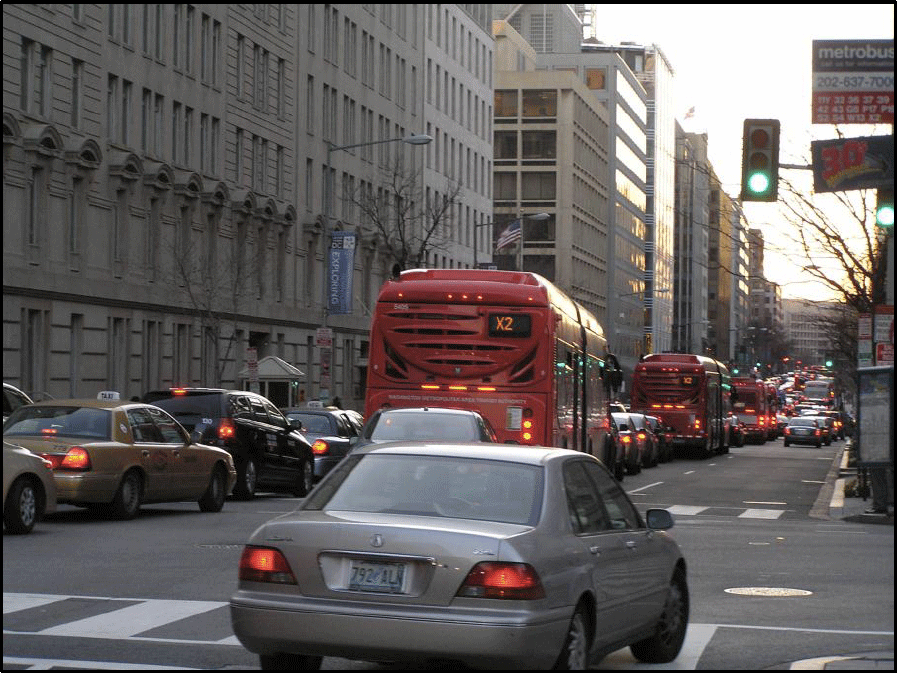H and I Streets Bus Improvements Study — Final Technical Report Released
Metro has released the final technical report of the H and I Streets Bus Improvements Study, making a compelling case for traffic management improvements and bus lane alternatives in the region’s most heavily traveled bus corridor.

Congestion on I Street caused by bottleneck at 17th Street, creating long queues backing up to 15th Street.
DC’s downtown core is a vibrant community, with 380,000 jobs today and significant residential and retail development in the coming decade. While growth will transform the core and create opportunities, it is likely to increase the burden on the transportation network that is already strained by the closure of Pennsylvania Ave.
Today, all users—drivers, bus passengers, pedestrians and bicyclists—experience congestion during peak periods. Besides high-volume traffic in the corridor, the constant friction among buses, vehicles and delivery trucks further aggravates travel experience. For bus passengers, the current corridor congestion severely affects travel time and service reliability—a short bus ride on I Street from 13th St to 19th St could take more than 10-15 minutes during rush hours.
Metro and DDOT collectively launched the H and I Streets Bus Improvements Study last year to explore bus improvements on H and I Streets NW in the downtown core, the region’s most heavily traveled and most productive bus corridor. The study investigated traffic management improvements and bus-only lane options with the objective of providing reliable and efficient bus service and alleviating Metrorail core congestion through innovative surface transit improvements.
The technical report is available for download (PDF) and posted on Metro’s Planning and Development webpage.
Four bus improvement options developed for analysis, as described and illustrated below: Read more…


Recent Comments